Small Structures, Big Impact
2025–06–17
2025–06–17
At Nola, we design for the shared everyday. Our work begins in the in-between spaces — the sometimes overlooked pauses in the urban fabric where life unfolds most naturally. We believe in the power of small-scale interventions to transform public space: to create shelter, foster identity, and invite interaction. Whether a bench with a park view, a canopy in an urban harbour, or a sculptural structure on a busy plaza, our designs respond to the site, its people, and its potential — making space, not taking it.
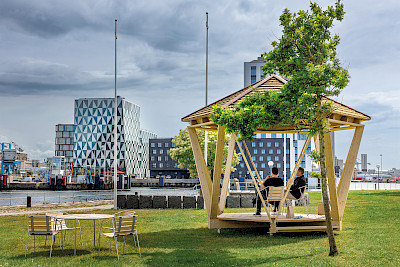
The Hexagon H22 wooden pavilion is designed by In Praise of Shadows, an architectural practice based in Stockholm. The pavilion creates an attractive open-air space for meetings, outdoor workplaces and social events.
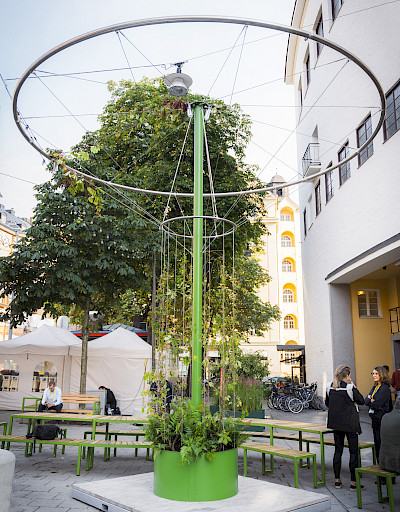
Arbory is a viable alternative to a tree in many locations where circumstances may be limiting.
Every product we develop is a response to a site, a context, and a human need. We collaborate closely with landscape architects, municipalities and designers to understand how each element can strengthen its surroundings. One example is the new Sala Backe Pavilion, developed by Tengbom for the City of Uppsala. It was designed for a plaza where trees couldn’t be planted due to underground infrastructure. The solution was to create the experience of leafy shade through a sculptural, freestanding structure made of perforated steel. The light filtering through the pattern evokes the dappled shadows of a tree canopy.
Our designs respond to the site, its people, and its potential — making space, not taking it.
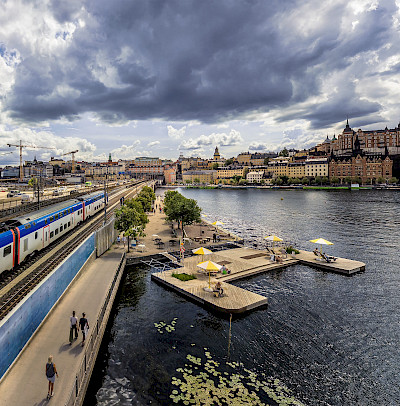
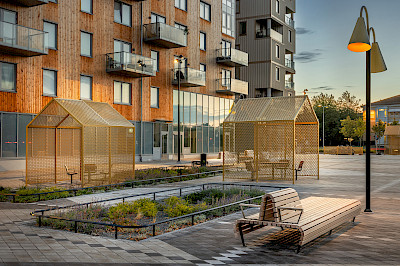
Like an illusion of greenery, the Sala backe pavilion offers leafy shade through a tactile pattern, perforated into its roof and walls.
The form of the pavilion itself is a nod to Sweden’s Folkhem era — a postwar architecture that sought to combine beauty, function and social good. With its stylised house shape and brass-toned finish, Sala backe Pavilion connects to the mid-century architecture of the site and pays homage to the legacy of builder Anders Diös. More than a product, it becomes a small landmark, offering protection and identity in an otherwise open space.
Other examples include Four Seasons, a sturdy parasol that introduces vertical structure and shelter, or Arbory, a climbing frame for plants that also provides spatial definition. Products like Långbordet and Parco — both available in Junior versions — create micro-environments where people of different ages, generations and backgrounds can interact, strengthening community through everyday moments. And by integrating lighting into our products, we not only extend their usability into evening hours — we also enhance the sense of safety and visibility that is so vital in public space. Placed in solitude or in curated groups, our products act as punctuation in the urban fabric, creating rhythm, structure, and atmosphere.

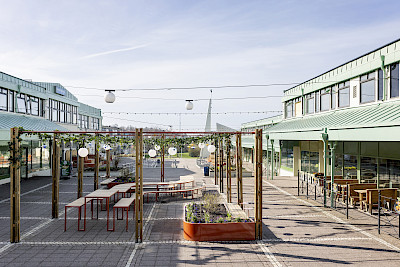
Långbordet at Vårväderstorget in Gothenburg.
“In a time when cities are growing denser and public space must work harder to meet the needs of many, these micro structures become essential tools.”
Henrik Edlund, CEO at Nola
“In a time when cities are growing denser and public space must work harder to meet the needs of many, these micro structures become essential tools. They remind us that the quality of the in-between matters — and that good design, at any scale, can make a place more generous, more beautiful, and more human”, says Nola’s CEO Henrik Edlund.
The strength of micro architecture lies in its ability to influence perception and behaviour with subtle gestures. It doesn’t demand attention but offers invitation. It adapts to the site, respects its context, and gives back a little more than it takes.
